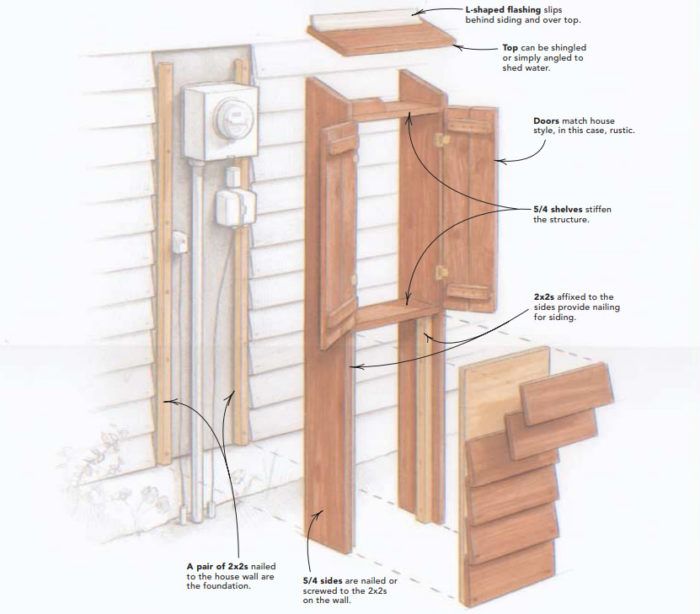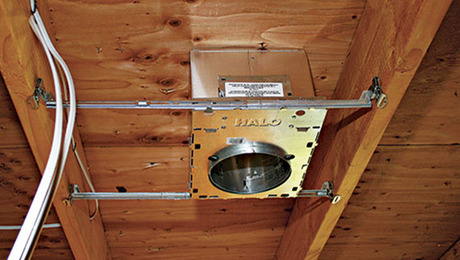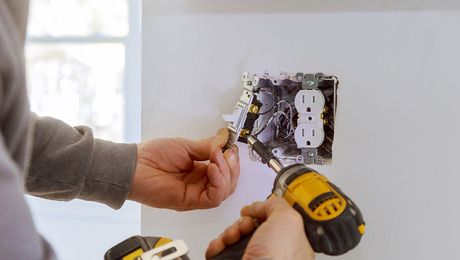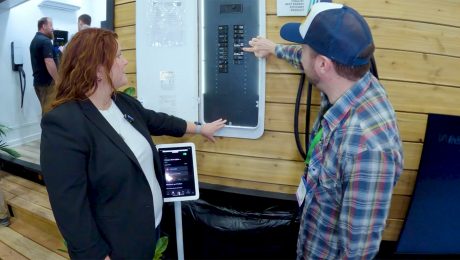Electric-Meter Covers
You can't avoid these ugly, glass-domed gizmos, but you can hide them.

Synopsis: Here’s an attractive, simply built, weatherproof fix for hiding electric meters, phone connections, and cable boxes from view.
When we built our home, the power company required that the electric meter be visible from the driveway to make the meter reader’s job easier. Of course, the interface box for the telephone and the cable TV would go in about the same spot. I was none too happy with the prospect of this industrial-looking assemblage being showcased against the natural-cedar siding we planned to use.
After giving it a little thought, I decided to enclose the meter. Several electricians told me it was against code to cover the meter. In fact, however, covers don’t violate the National Electrical Code, but your local power supplier might object. I found that as long as meter readers know where the meter is and have easy access to it, they don’t object at all. And because a cover protects the glass over the meter from errant baseballs or mower-propelled rocks, I’d argue that meter covers boost safety. Speaking of safety, remember that wires coming into the meter might carry 200 amps or more; don’t cut into them.
About the only downside I’ve found is that these boxes can become hornet hotels. I suppose that they could be sealed enough to avoid that problem, but I’ve found that simply inspecting once in a while for new nests is a sufficient precaution.
Materials match the house
I used 5/4×12 cedar for the box’s sides, which were nailed to vertical 2x2s attached to the wall sheathing before the siding was installed. These sides run down to the top of the foundation, and I make them deep enough to accommodate the meter, plus the thickness of the battens on the back of the doors. The house siding then butts against the sides, the way it would against an inside corner board, achieving a clean look with a minimal amount of labor. Vertical 2x2s provide nailing for the short pieces of siding that clad the front of the lower section. I have since enclosed other meters with T-111 siding. I imagine that any variety of siding would work in this situation
When there’s a risk of water getting behind the box, I flash the box as I would the top of a window, with an L-shaped flashing that goes behind the siding and comes out over the roof of the box.
The doors hang from cabinet hinges, and I worried about using them outdoors when I built our box 15 years ago. However, they don’t seem to mind the night air, even in our damp Pacific Northwest climate. If you’re concerned about hardware corrosion, you could use galvanized hinges.
Future access is an important consideration: You might want to add more phone or cable lines later without tearing into the siding or rebuilding the box. Making the box a bit bigger than your current needs isn’t a bad idea. Most customers find that the cost of a few hours labor and a small amount of materials make these boxes a good investment.
For photos and a dissected diagram of the cable box, click the View PDF button below.


























